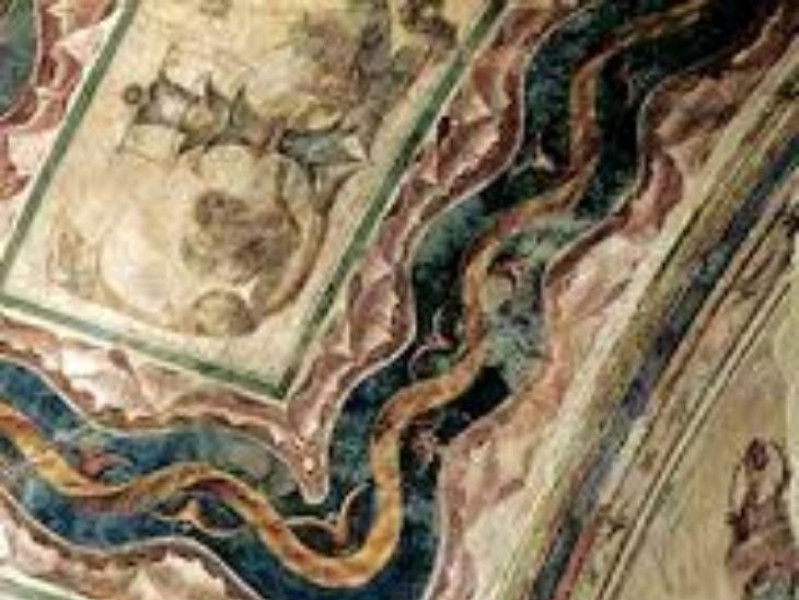Parco archeologico del Colosseo - Aula Isiaca con Loggia Mattei
Parco archeologico del Colosseo
Aula Isiaca
The paintings today on display in a room of the Domus Augustana were brought to light in 1912 by Giacomo Boni beneath the Basilica of the Domus Flavia, but they were already identified during the 18th century excavations by the Duke of Parma and Piacenza. The paintings belonged to a residence on the Palatine, with two different building phases. The first one is shown by a painted fragment with illusionistic architecture dated back to the middle of the I century B.C.
The richly frescoed apsidal room belongs instead to the Augustan age, dating to around 30 BC, and shows many stylistic and contents affinities with the Houses of Augustus and Livia on the Palatine and with the Villa della Farnesina.
The objects of the paintings refer to Egypt and to the goddess Isis (such as the ritual objects linked to the cult of the goddess like snakes, vessels, lotus flowers, roses), thus explaining its modern name.
The longer wall presents a decoration of illusionistic architecture over a podium, with thin columns and a central shrine containing a painted landscape with mythological scenes. Other panels, barely legible, were positioned next to the shrine: the myth of the birth of Helen may have been depicted on the long wall, on the right. On the short back wall was possibly painted the disembarkation of Helen and Paris, on the lunette a ceremonial vase with a roses wreath. The wall of the apse presents a sacred landscape and a Nilotic landscape on the podium. The walls are bounded at the top by a continuous frieze with uraei (snakes) and lotus flowers and by a stucco frame. The rich decoration of the vault, which preserves traces of gilding, is very refined: it has a yellow ribbon on a broad undulating dark blue band, enclosing candelabra, plant motifs of unusually fine workmanship with allusions to the the cult of Isis.
Loggia Mattei
The Mattei Loggia, painted in the 1520s by the workshop of Baldassarre Peruzzi - architect, painter and scenographer - is all that remains of the villa built by the Stati family and later acquired in 1561 by the Mattei family. The ceiling is decorated with grotesques with frames of yellow frieze with masks. This kind of paintings derives from the discovery of ancient paintings in ‘grotte’ (caves) of the Domus Aurea on the Esquiline at the end of the XVth century. Against a white background are the coat of arms of the Mattei family (at the centre), which in 1595 replaced that of the Stati family, and two little panels with mythological subjects against a dark background: the Marriage of Hercules and Hebe and Venus between Cupid and the Muses. The triangular compartments are decorated with roundels containing the twelve signs of the zodiac against a dark backgound, whilst on the corbels are little painted shrines holding six Muses on the long sides and Athena and Apollo on the short sides. The wall frescoes, depicting episodes from the myth of Venus, were detached in 1846 and moved to the Hermitage Museum in St Petersburg, where they can still be found today. A few years later, the mythological scenes and the roundels with signs of the zodiac were detached and sold to the Metropolitan Museum of Art in New York; thanks to a recent loan agreement they have been replaces in their original positions.

